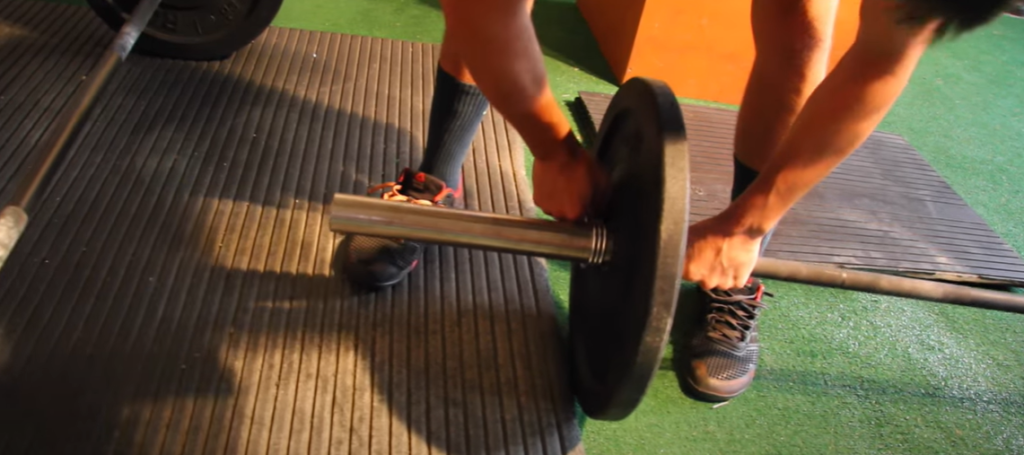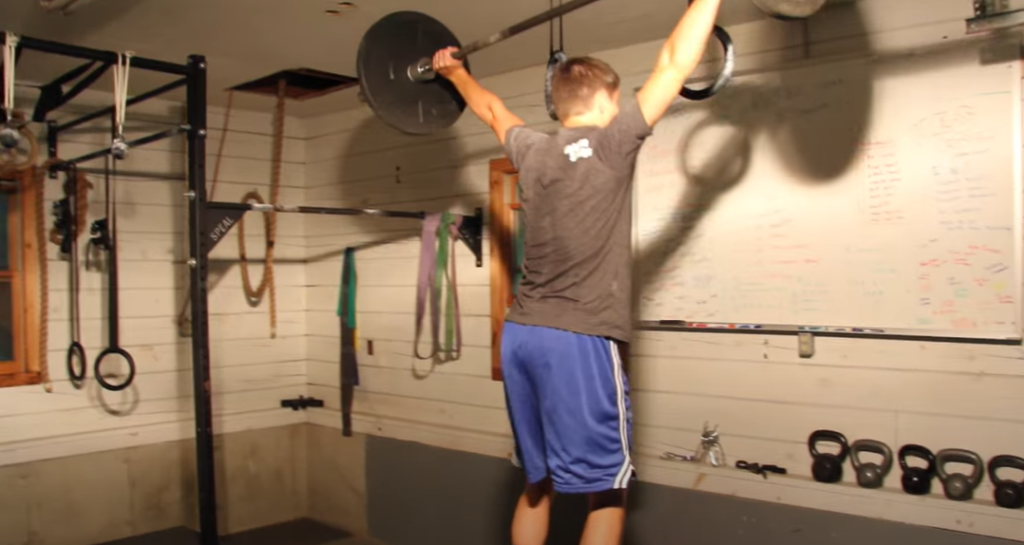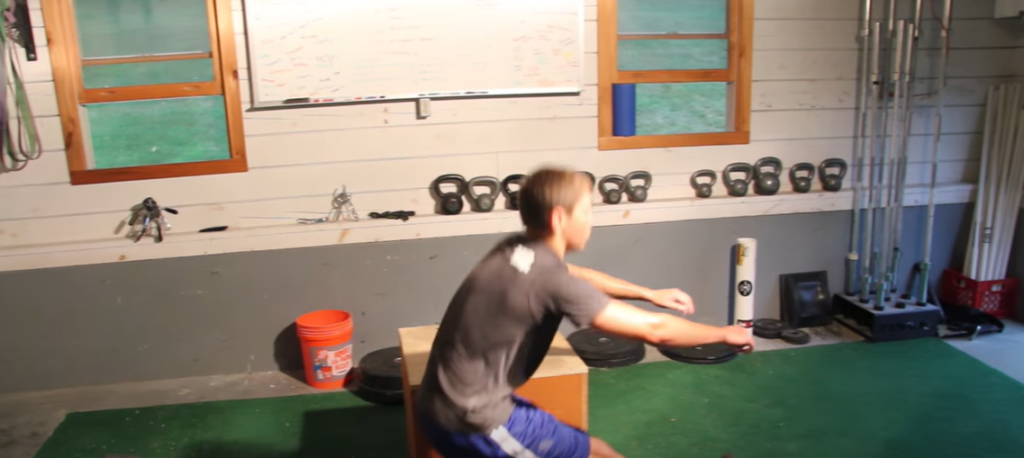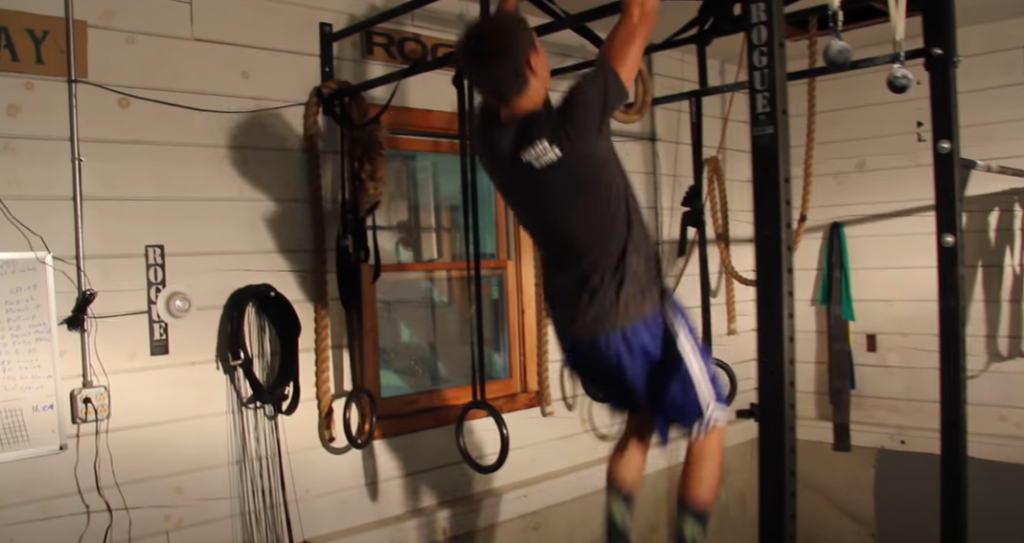Do you ever look at those confident, strong, and fearless teens and wonder how they got that way? Well, here’s a secret: CrossFit. Yes, you heard it right. CrossFit isn’t just for adults anymore. These days, teenagers are jumping on the CrossFit bandwagon to build their strength, endurance, and most importantly, their confidence. This blog post will dive into the world of teenage CrossFit workouts that will not only make you break a sweat but also transform you into a force to be reckoned with. So, get ready to unleash your inner beast and take on these fitness challenges that are specifically designed for teens like you.
Is CrossFit Good for Teenagers?
CrossFit has gained popularity as a high-intensity training program that focuses on functional movements. It involves a variety of exercises and activities such as weightlifting, gymnastics, and cardio. While CrossFit is often seen as an effective fitness routine for adults, there have been debates about whether it is suitable for teenagers.
However, others raise concerns about potential risks associated with intense workouts at a young age. With improper form or overexertion, injuries can occur to developing bones and muscles. Furthermore, some experts believe that the competitive nature of CrossFit can put pressure on teenagers to push themselves too hard and lead to burnout or exhaustion.
Ultimately, the decision to allow a teenager to participate in CrossFit should be made carefully with consideration of their physical and emotional maturity. It is important for teenagers to receive proper instruction from qualified coaches and listen to their bodies, taking breaks when needed.

Overall, while CrossFit may offer benefits for teenagers including improved fitness and confidence, it is important for parents and guardians to weigh the potential risks before allowing them to participate in this type of training program. As with any exercise regimen, it’s crucial for teens to approach CrossFit with caution and prioritize safety above all else [1].
How often should you train CrossFit as a teenager?
As a teenager, it is important to maintain a healthy and active lifestyle. CrossFit can be a great way to stay fit and strong, but how often should you train? The answer is not one-size-fits-all as each individual’s body and fitness goals are different. However, there are some general guidelines that can help teenagers determine their training frequency.
Firstly, it is important to listen to your body. If you feel sore or fatigued after multiple days of training, it might be time for a rest day. Overtraining can lead to injury and hinder progress. Rest days are just as important as training days in allowing your body to recover and repair itself.
Additionally, it is important to have a balance in training. CrossFit is a high intensity workout that combines elements of weightlifting, gymnastics, and cardio. As a teenager, it is important to also incorporate other forms of physical activity such as sports, yoga, or hiking to prevent overuse injuries and maintain overall fitness.
Finally, make sure to communicate with your coach or trainer about your goals and any concerns you may have. They can help tailor a training program that suits your individual needs and abilities. Remember, CrossFit is not just about pushing yourself to the limit every time, but also taking care of your body and staying active in a sustainable way.
In conclusion, there is no set formula for how often teenagers should train CrossFit. It is important to listen to your body, consider your age and stage of development, maintain balance in training, and communicate with your coach or trainer. By doing so, you can safely and effectively incorporate CrossFit into your fitness routine as a teenager. So, go ahead and enjoy those intense WODs (Workout of the Day) while still taking care of yourself! Keep striving towards a healthy and active lifestyle.

CrossFit Workouts for Teenagers
Weightlifting
Weightlifting is an essential component of CrossFit workouts for teenagers. It helps to build strength, power, and muscle mass which are important for overall fitness and athletic performance. However, it is crucial for teenagers to learn proper form and technique before attempting heavy lifts.
Teenagers should start with bodyweight exercises such as air squats, push-ups, and pull-ups to develop a foundation of strength and stability. As they progress, they can gradually add weight by using dumbbells or kettlebells before moving on to barbell movements like deadlifts, squats, and overhead presses.
It is also important for teenagers to understand the concept of progressive overload – where they gradually increase the weight or intensity of their lifts over time. This ensures that they continue to challenge their muscles and see progress.
In addition to building strength, weightlifting can also improve bone health in teenagers. It promotes the growth of new bone tissue, making bones stronger and less prone to injury. This is particularly important during adolescence when rapid bone growth occurs.
Cardiovascular Conditioning
CrossFit workouts for teenagers also include cardiovascular conditioning exercises like running, rowing, or biking. These activities help to develop endurance and stamina which are essential for sports performance as well as overall health. Teenagers should gradually increase the duration and intensity of their cardio workouts over time. This will not only improve their aerobic capacity but also boost metabolism and burn fat.
It’s important for teenagers to listen to their bodies and not push themselves too hard. Overtraining can lead to injuries or burnout, so it’s important to prioritize rest and recovery.
Gymnastics
Gymnastics movements are another key component of CrossFit workouts for teenagers. They help to improve body control, balance, and coordination – all important skills for sports performance. Teenagers can start with basic gymnastics movements like handstands, cartwheels, and rolls before moving on to more advanced skills such as pull-ups, muscle-ups, and handstand push-ups. As with weightlifting, it’s important for teenagers to learn proper form and technique to prevent injury.

AMRAP for Quality
AMRAP (As Many Rounds As Possible) workouts are a popular component of CrossFit training, known for their intensity and effectiveness. However, when it comes to teenagers, it’s crucial to prioritize quality over quantity. Instead of solely fixating on beating the clock, teenagers should focus on executing each movement with precision, emphasizing proper form and control. By doing so, not only will they reduce the risk of injuries, but they will also experience consistent progress and improvement in their fitness journey. This mindful approach ensures that they develop a strong foundation and set themselves up for long-term success in their physical well-being.
Cindy: A Sample CrossFit Workout for Teens
Here’s a sample CrossFit workout specifically designed for teenagers, known as “Cindy.” It consists of three movements – pull-ups, push-ups, and air squats – performed in a continuous circuit.
The workout is:
- 5 pull-ups
- 10 push-ups
- 15 air squats
The goal is to complete as many rounds as possible in 20 minutes with proper form and technique. This workout not only targets various muscle groups but also challenges cardiovascular endurance.
Remember, the key is to focus on quality over quantity, so take breaks when needed and don’t sacrifice form for speed. And always consult a coach or trainer if you have any doubts about your form or ability to perform a certain movement safely.
Open 20.2: A CrossFit Competition for Teens
CrossFit also offers exciting opportunities for teenagers to engage in competitive events specifically tailored to their age group. One such thrilling event is Open 20.2, a series of five challenging workouts spread out over five weeks. Each week, a brand new workout is unveiled, carefully crafted to push teenagers’ limits in various aspects of fitness, including strength, endurance, and skill work. Participating in competitions like Open 20.2 not only provides teenagers with a chance to showcase their abilities and test their skills but also fosters a strong sense of camaraderie and community within the vibrant world of CrossFit. It’s an incredible way for young athletes to bond, grow, and thrive together [2]!

Incorporating CrossFit into Teenage Lifestyle
CrossFit has become increasingly popular in recent years, and for good reason. It offers a unique combination of high-intensity workouts, functional movements, and a supportive community environment. This makes it an ideal form of exercise for teenagers looking to improve their overall fitness and well-being.
One of the key benefits of incorporating CrossFit into teenage lifestyle is its ability to provide a well-rounded approach to fitness. Traditional gym workouts often focus on isolating specific muscle groups, whereas CrossFit emphasizes full-body exercises that mimic everyday movements. This not only improves strength and endurance but also prepares teenagers for real-life activities such as carrying heavy objects or climbing stairs.
Moreover, CrossFit encourages a supportive community environment where teenagers can build friendships and develop a sense of camaraderie with their peers. This is especially important during the teenage years when social connections are crucial for overall well-being. Additionally, having access to coaches who can provide guidance on proper form and technique can help prevent injuries and promote safe exercise practices.
Incorporating CrossFit into teenage lifestyle also offers opportunities for goal setting and tracking progress. The variety of movements and workouts allows teenagers to set specific targets for improvement, whether it be completing a certain number of reps or lifting a heavier weight. This can be highly motivating and instill a sense of accomplishment when goals are reached.
However, it is important to note that CrossFit should be approached with caution and under the guidance of trained professionals. Teenagers should always listen to their bodies and take breaks as needed, rather than pushing through pain or fatigue. Proper form and technique should also be emphasized to prevent injury.
In conclusion, incorporating CrossFit into teenage lifestyle can have numerous benefits for physical, mental, and social well-being. With proper guidance and precautions, it can help teenagers develop healthy habits that will set them up for a lifetime of fitness.
How to reveal after Teenage CrossFit Workouts?
Teenage CrossFit workouts can be tough and challenging, but they also provide numerous benefits for young athletes. However, it is important to remember that these intense workouts require proper rest and recovery in order to avoid injury and burnout.
Here are some tips on how to properly reveal after teenage CrossFit workouts. First, it is important to cool down and stretch after a workout. This helps prevent muscle soreness and tightness, as well as promoting flexibility and range of motion.
Next, make sure to refuel your body with proper nutrition. After a strenuous workout, your body needs to replenish the energy it has expended. This means eating a balanced meal that includes carbohydrates, protein, and healthy fats.
It is also crucial to stay hydrated before, during, and after a CrossFit workout. Water is essential for regulating body temperature and transporting nutrients throughout the body. Aim to drink at least half of your body weight in ounces per day.

In addition to physical recovery, mental rest is just as important. Make sure to take breaks from intense workouts and allow your body to fully rest and recharge. This can include taking a day off from CrossFit to engage in low-impact activities such as yoga or walking.
Another important factor in properly revealing after teenage CrossFit workouts is listening to your body. If you are experiencing any pain or discomfort, it is important to address it and modify your workouts accordingly. Pushing through the pain can lead to serious injury.
Lastly, make sure to get enough sleep each night. During sleep, our bodies repair and rebuild muscles, making it crucial for proper recovery after intense workouts.
By following these tips, you can ensure that you are properly revealing after teenage CrossFit workouts and setting yourself up for long-term success in this physically demanding sport. Remember, taking care of your body is just as important as pushing it to its limits in CrossFit. So listen to your body, rest and recover, and keep striving towards your fitness goals!
FAQ
Is CrossFit good for 15-year-olds?
CrossFit, like any other high-intensity exercise program, can be beneficial for teenagers if done correctly and under proper supervision. The American Academy of Pediatrics recommends that children and adolescents engage in moderate-to-vigorous physical activity at least 60 minutes per day to maintain good health.
However, before enrolling a 15-year-old into CrossFit classes, it is essential to consider their physical development, experience with exercise, and maturity level. CrossFit workouts are designed to challenge individuals at all levels of fitness, including seasoned athletes. Therefore, it’s crucial to ensure that a teenager has the necessary strength, coordination, and emotional readiness to safely participate in these intense workouts.
Can a 13-year-old do CrossFit?
It is generally not recommended for a 13-year-old to engage in CrossFit training without adequate supervision and guidance. The high-intensity nature of CrossFit workouts can pose challenges for individuals who are still in the early stages of their physical development. To ensure the safety and well-being of young athletes, it is crucial to consult with a qualified healthcare professional or a certified CrossFit trainer before enrolling a 13-year-old into classes. Taking this proactive approach will help address any potential concerns and tailor the training program to suit the individual’s age, abilities, and physical maturity.
Are there any age restrictions for CrossFit?
There are no set age restrictions for CrossFit, as it can be modified and scaled to accommodate different fitness levels and ages. However, it is recommended that children under the age of 12 should focus on developing basic movement skills through sports and activities like gymnastics, swimming, and running before starting CrossFit. Additionally, teenagers must have proper supervision and guidance when participating in CrossFit workouts to avoid injury or overexertion. It is always best to consult with a doctor or certified CrossFit trainer before beginning any new exercise program, regardless of age.
What are the benefits of CrossFit for teenagers?
CrossFit can provide numerous benefits for teenagers, including improved physical fitness, increased self-confidence, and enhanced mental resilience. It also promotes functional movements that can benefit teens in their daily activities and sports performance. Furthermore, CrossFit encourages a supportive community atmosphere that can help teenagers develop teamwork skills and build lasting friendships.
However, it’s essential to remember that individual results may vary, and not all teens may experience the same benefits from CrossFit. It’s vital to approach each workout with proper technique and listen to your body’s limits to prevent injury or overexertion. Additionally, it’s crucial to maintain a balanced diet and get enough rest and recovery time for optimal results.
Useful Video: CrossFit Teens Go for Max Lifts
Conclusion Paragraph
So, if you are a teenager and want to be fit and healthy, try teenage CrossFit workouts. These workouts are designed specifically for your age group and can help you achieve your fitness goals. Remember to always start slowly and listen to your body, gradually increasing the intensity as you get stronger. And most importantly, have fun while working out!
CrossFit is not just about physical fitness, it also focuses on mental toughness and overall well-being. By incorporating CrossFit into your lifestyle at a young age, you are setting yourself up for a lifetime of healthy habits.
Moreover, CrossFit workouts can also have a positive impact on academic performance. Regular exercise has been proven to improve cognitive function, memory and concentration. As teenagers often face academic challenges, adding CrossFit to their routine can help them stay focused and perform better in school.
References:
- https://crossfitangier.com/why-crossfit-is-perfect-for-angier-teens-and-young-adults/
- https://www.boxrox.com/5-crossfit-workouts-for-teenagers/









Leave a Review